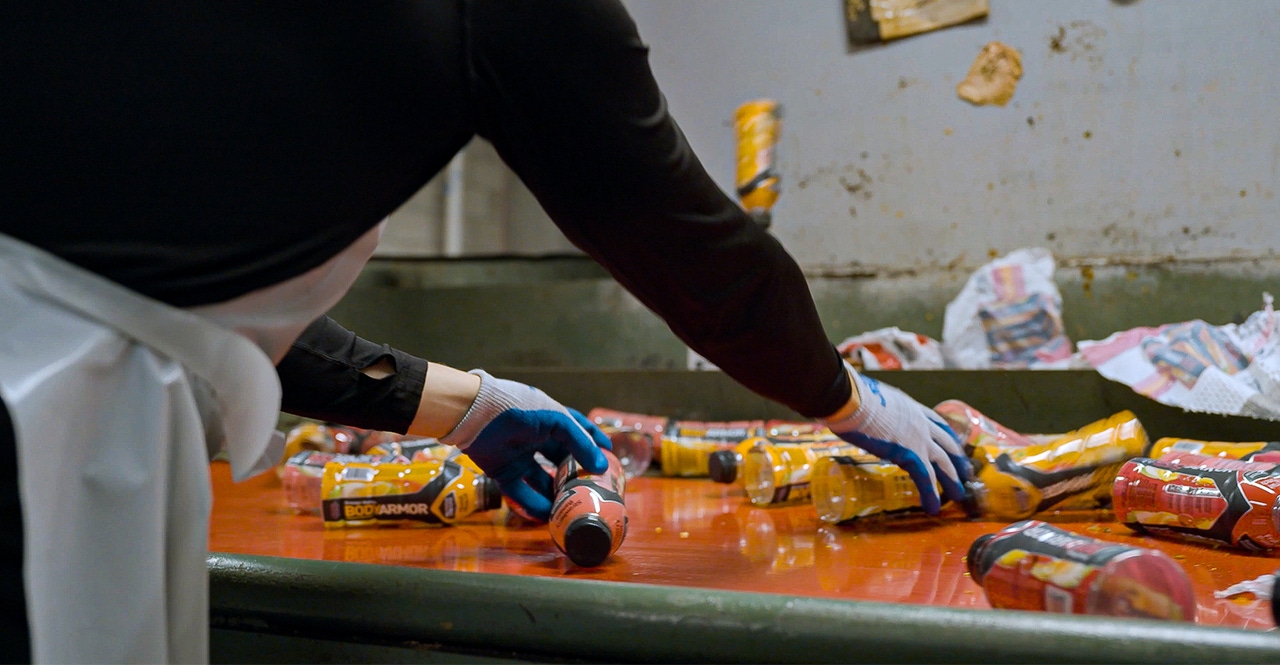Austin FC's Q2 Stadium Showcases On-Site Mini MRF, 90 Percent Waste Diversion Rate
Q2’s diversion rate stands at 90 percent—a huge bump from a few years ago when a waste audit showed that about half of the divertible materials were landing in the trash. Alongside that leap, contamination has plunged from 22 percent to just under seven percent in two years.

Q2 Stadium, home to Major League soccer club Austin FC, draws over 20,000 fans to each game; collectively the crowd generates about 7.5 tons of waste. Figuring out how to recover as much quality recyclable and compostable material as possible has taken thought and work.
Getting to the next level, and then the next one, has been about homing in on system and process design. The diligence is paying off.
Today, Q2’s diversion rate stands at 90 percent—a huge bump from a few years ago when a waste audit showed that about half of the divertible materials were landing in the trash. Alongside that leap, contamination has plunged from 22 percent to just under seven percent in two years.
Over time, the fans did a bulk of the work, seeing that their drink containers, plates, trays, cutlery, and food scraps ended up in the right receptacles. Overall, they have done pretty well, but there had to be a way to do better, figured Texas Disposal Systems (TDS), who has worked with the stadium along its sustainability journey since the venue came up off the ground. The notion of a system, located at one central site where workers further separated the onslaught of after-game materials, made sense.
From that notion, the first setup launched, designed and built by TDS. It was basically an ad hoc sorting center. Crews ripped bags open, one by one, on foldout tables and did their best to separate materials and pick out contaminants. The massive loads had to be lifted and pushed down chutes to the floor below. Besides requiring very physical work in a tight space, the system could only sort two streams: recyclables and organics. There was no room for a trash receptacle, so, the crew placed sorted trash in a gondola, then walked it to an open-top landfill dumpster off the loading dock.
“We had to figure out how to further separate the streams in one very contained space and with much greater efficiency. So, we ultimately configured a system to replicate the operational functions of a materials recovery facility (MRF), which has significantly improved our sorting capabilities,” says Greg Behl, sustainability and diversion coordinator, Texas Disposal Systems.
Now, after a rough presort, materials are sent down a chute, landing on a sorting belt downstairs. From there workers direct the material onto the correct conveyor belt, which leads to the proper compactor—there are two of them: one compactor for recyclables and a split compactor for both compostables and trash. The small crew throws trash in bins situated on either side of them; placing bags, once filled, on the trash side of the split compactor, streamlining how garbage is managed.
The design, inspired by a similar system at an arena in Seattle that Behl toured with colleagues, facilitates a cleaner, faster process. And it alleviates backups that had inevitably happened at the end of the night.
“The Austin FC fans do a great job at keeping materials in the right container; however, to truly maximize recovery of organics and recyclables it was necessary to create a system that enables Austin FC staff to look at each stream and sort for quality control," says Adam Gregory, vice president of Texas Disposal Systems.
"The automated conveyor and compaction system we came up with accomplishes that as efficiently as possible in a small footprint.”
Just having belts move the materials along has made a big difference. It’s easier on the workers than the earlier process, and it takes less of them to do the job, Behl says. A team of three powers the entire operation, with the system able to process about seven tons of materials each game day, equivalent to 1.5 tons an hour.
From the start, Q2 leadership and Austin FC wanted to make sustainability part of their brand.
Their earliest strategy to reduce contamination simply focused on teaching the sorting staff. Management held trainings; invited a team from Texas Disposal Systems to observe and assist with sorting operations for a few matches; and added physical and digital signage to sorting spaces.
“But we were finding that, with the way our operations were set up at the time, there was still too much room for error. The ‘mini MRF’ solved most [of the related] issues and, combined with that training and education, really put our staff in a better position for success,” says Nick Otte, senior director of stadium operations at Austin FC.
Q2 has gone on to earn Total Resource Use and Efficiency (TRUE) certification, becoming the first soccer stadium and fifth sports venue worldwide to achieve this designation.
The mini MRF provided an extra push to the finish line to certification.
“We had done a good job [on diversion] in previous years. But we needed to improve those numbers. And our operations as-is weren’t sustainable in terms of efficiency or staff comfort. The mini MRF allowed us to really fine tune the whole operation and set ourselves up for sustainable, long-term success,” Otte says.
Having this working system in place frees up time for other plans.
“Now that we feel really good about our sorting processes we can focus on potential improvements on source reduction, opportunities for reuse, continued training and education,” Otte says.
“And as our club prepares to host the Major League Soccer All-Star game in 2025, we have an opportunity to really showcase these efforts on a huge stage.”
About the Author
You May Also Like




.png?width=300&auto=webp&quality=80&disable=upscale)